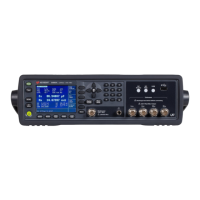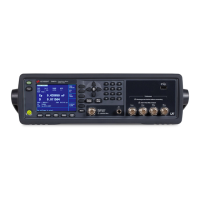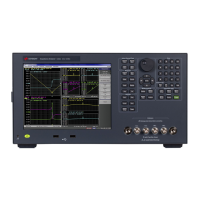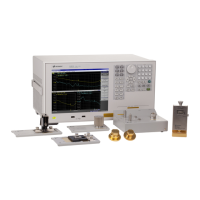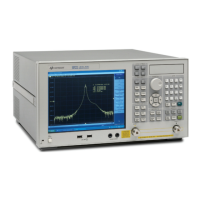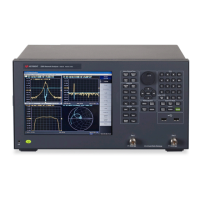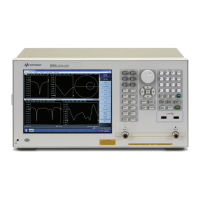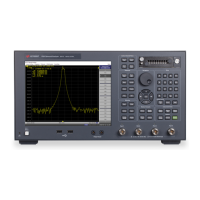242 Keysight E4980A/AL Precision LCR Meter
Overview of Remote Control
Sending SCPI command messages
8-
Sending SCPI command messages
Types and structure of commands
The SCPI commands available for the E4980A/AL are classified into two groups
as follows.
E4980A/AL commands
Commands specific to the E4980A/AL. They cover all measurement functions
that the E4980A/AL has and some general-purpose functions. The commands
in this group are arranged in a hierarchical structure called the command tree
(see “Command Tree” on page 383). Each command consists of character
strings (mnemonics) indicating each hierarchical level and colon (:) separators
between hierarchical levels.
IEEE common commands
Commands to cover general-purpose functions defined in IEEE488.2 that are
commonly available to instruments that support this standard. The commands
in this group have an asterisk (*) at the beginning. There is no hierarchical
structure for the commands in this group.
Concepts of the command tree
The commands at the top of the command tree are called “root commands” or
simply “roots.” To access lower-level commands in the tree, you need to
specify a specific path like a directory path in the DOS file system. After turning
the power on or resetting your PC, the current path is set to the root. Special
characters in messages change the path setting as described below.
Message terminator A message terminator such as the
<new line> character sets the current path to the root.
Colon (:) A colon between two command mnemonics lowers the level
of the current path in the command tree. A colon used as the
first character of a command specifies the command
mnemonic that follows as the root-level command.
Semicolon (;) A semicolon does not change the current path but separates
two commands in the same message.
Figure 8-11 shows an example of how to use colons and semicolons to
efficiently access commands in the command tree.
